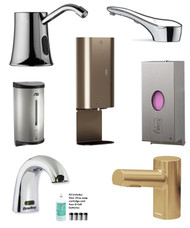A Practical Guide to Automatic Soap Dispensers for Commercial Spaces
Touchless soap dispensers have moved from novelty to necessity in commercial environments. From office buildings to healthcare facilities, automatic dispensers help maintain higher hygiene standards while reducing waste and contact points. They’re more than just a modern upgrade - they support operational efficiency, streamline maintenance, and help your team meet sanitation protocols with less effort.
If you're considering adding automatic dispensers to your facility or troubleshooting the ones you already have, this guide covers everything you need to know. We’ll walk through how they work, how to keep them running, what soap to use, and which models are built to last in high-traffic settings.
Are Automatic Soap Dispensers Worth It?
In commercial settings, reliability and efficiency drive every purchasing decision. Automatic soap dispensers may carry a higher upfront cost than manual options, but the long-term benefits often outweigh the initial investment.
Here’s why they’re worth it:
Touch-Free Operation: Reduces the risk of cross-contamination in restrooms, breakrooms, and food-prep stations.
Controlled Dispensing: Delivers a measured amount of soap every time, helping reduce product waste and lower refill frequency.
Cleaner Facilities: Less mess around sinks, with fewer drips and buildup.
Streamlined Maintenance: Many models are designed for quick refills and long battery life, saving time for custodial teams.
Automatic dispensers are especially valuable in high-traffic environments where hand hygiene is non-negotiable. Whether you manage a hospital, warehouse, or multi-floor office space, they offer consistency and convenience that manual options can’t match.
For facility managers focused on long-term performance and public health standards, automatic dispensers are a practical upgrade.
How Do Automatic Soap Dispensers Work?
Automatic soap dispensers rely on sensor technology to deliver soap without the need for physical contact. Most models use infrared sensors that detect the presence of a hand placed underneath the nozzle. When the sensor registers motion within a set range, it triggers a small pump that dispenses a precise amount of soap.
Key Components Behind the Technology:
Infrared Sensors: These sensors detect body heat or motion, activating the pump mechanism when hands are in range.
Dispensing Pump: Once activated, the pump draws soap from the reservoir and releases it in a controlled dose.
Power Source: Dispensers are typically battery-powered, though some larger commercial models may have plug-in options.
Reservoir Design: Some models use sealed cartridges for soap, while others feature open-fill reservoirs that can be refilled manually. At Berl’s Commercial Supply, we specialize in reservoir-type soap dispensers, also called bulk-fill. This means that the facility owner can use whatever soap they choose, and buy it in inexpensive bulk jugs. Companies like Gojo and Purell offer soap dispensers that use pre-portioned refill cartridges, which can come in bags or tubs. These options can be easier to use and replace, but they come at a financial and environmental cost, as they use additional packaging and are far more expensive than bulk-fill soap.
Sensor accuracy and battery efficiency vary by model, but most commercial-grade units are built to withstand heavy daily use. Proper placement and maintenance keep them running smoothly, minimizing downtime and maintaining hygiene standards across your facility.
What Soap Should You Use in an Automatic Soap Dispenser?
Choosing the right soap for your automatic dispenser is key to getting consistent performance and extending the life of your equipment. Not every soap is designed for touchless systems, and using the wrong type can cause clogs, leaks, or sensor malfunctions.
Here’s what to consider:
Soap Type: Most automatic dispensers are compatible with one of the following: liquid, foam, or gel. Soaps with grit, beads, or moisturizing lotion are never recommended with automatic soap dispensers as they can frequently clump, or leave dried residue. Always check your dispenser’s specifications to ensure you’re using the correct formulation.
Viscosity Matters: Thick, heavy soaps can clog pumps or strain the motor. Opt for soaps designed specifically for automatic dispensers, with a smooth, pourable consistency.
Antibacterial Options: Facilities that prioritize infection control often choose antibacterial formulas, but it’s important to use products that are gentle enough to prevent skin irritation with frequent use.
Fragrance-Free and Industrial-Grade: In food prep areas, healthcare settings, or industrial environments, fragrance-free or specialized heavy-duty soaps may be required to meet safety and compliance standards.
Foam Soap: If you have a foaming soap dispenser, be sure to use pre-formulated foam soap. Do not use regular soap, as it will not foam and may clog the machine. Do you want to make your own foam soap? Use regular hand soap or even a standard dish soap, and dilute it 5-parts water to 1-part soap. The end result is a soap that is light enough so that it can be foamed and will not clog the machine. Never use a creamy soap for foaming, as it will also clog the dispenser.
Using a soap that’s too thick, improperly diluted, or incompatible with your system can reduce sensor sensitivity and damage internal components. Always use manufacturer-recommended products or quality commercial-grade refills that are formulated for dispenser use. If your sensor activated soap dispenser stops working, the manufacturer will first want to know which soap you used. If the viscosity is too thick, it’s likely that it will have caused the malfunction and also voided your warranty. (And if it is too thin, it could result in unwanted dripping.)
How to Refill an Automatic Soap Dispenser
Keeping your automatic soap dispensers filled and ready is straightforward with the right approach.
Here’s a general step-by-step process:
Turn Off the Dispenser: If your unit has an on/off switch, always power it down before opening it to prevent accidental dispensing.
Access the Reservoir: Most models have a locking lid or removable cover. Use the key or release button provided with your unit. Keyholes are normally on the top, but look on the sides or bottoms for a releasing lever.
Remove the Empty Cartridge or Open the Fill Port:
- For cartridge systems, simply remove the used cartridge.
- For open-fill designs, locate the refill port, usually found at the top or front.
Carefully inspect and clean:
- Inspect the nozzle for leaks, cracking, and dried residue, rinse with warm water, and clean as necessary.
- Wipe down the area around the soap tank and nozzle with a damp cloth being careful not to expose the internal electronics to any water or soap.
Refill with the Right Soap:
- If using cartridges, insert a new, compatible cartridge firmly into place.
- If using bulk soap, carefully pour the correct soap type into the reservoir without overfilling.
Secure the Lid or Cover: Make sure it snaps or locks back into place to maintain a good seal.
Power the Unit Back On and Test: Activate the sensor to confirm that the soap dispenses properly and that no leaks are present.
Sanitation Tip: Wipe down the reservoir area with a clean, damp cloth before refilling to prevent buildup and ensure optimal performance.
Refilling regularly and cleaning buildup around the nozzle will keep your dispensers working reliably, especially in high-traffic settings where downtime isn’t an option.
Why Is My Automatic Soap Dispenser Not Working?
When an automatic soap dispenser stops working, it’s usually a quick fix once you identify the issue. Most problems stem from a few common causes.
Here’s what to check first:
Low or Dead Batteries: If the sensor isn’t responding, the batteries may need to be replaced. Always use fresh, high-quality batteries for best performance.
Sensor Blockage: Dirt, soap buildup, or even splashes of water on the sensor can prevent it from detecting hands properly. Gently wipe the sensor area clean with a soft, damp cloth.
Clogged Nozzle: Thick soap or dried soap residue can block the dispenser nozzle. If soap isn't flowing but the unit is activating, a thorough cleaning may be needed.
Soap Compatibility Issues: Using soap that’s too thick or improperly formulated for automatic dispensers can cause clogs or damage the pump. See our note about foaming soap dilution above.
Reservoir Issues: If the soap level is low, air can get into the pump mechanism. Check and refill the soap reservoir, making sure it’s properly seated and sealed.
Internal Damage: If cleaning and refilling don't solve the problem, the pump or sensor may have worn out over time, especially in high-use areas. In this case, it may be time to repair or replace the unit.
Tip: Regular maintenance, including wiping down the sensor and checking batteries monthly, can prevent most common issues before they affect daily operations.
Conclusion: Smart Solutions for Cleaner, Safer Facilities
Automatic soap dispensers do more than modernize your space; they help your team maintain better hygiene standards with less effort. From reducing product waste to minimizing contact points, a reliable touchless system supports both operational efficiency and a healthier environment.
Whether you're upgrading an existing facility or outfitting a new one, choosing the right dispenser, the right soap, and the right maintenance routine makes all the difference. Berl’s Commercial Supply offers proven solutions built for the demands of commercial, healthcare, and industrial spaces.
Explore our automatic soap dispenser collection to find dispensers that match your facility’s needs, or contact our team for help selecting the best fit for your operation.

